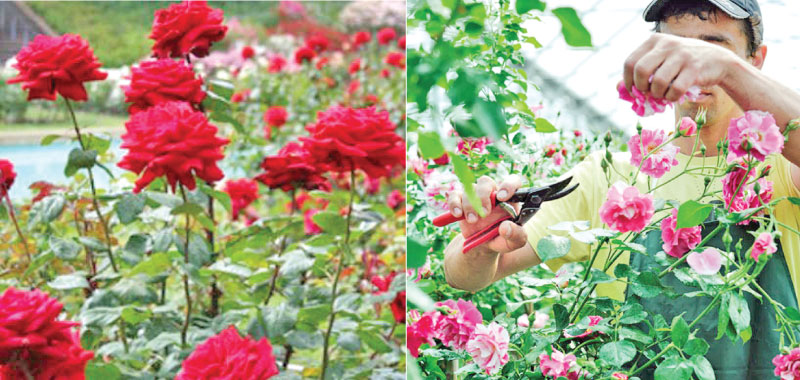Roses have a reputation for being fickle, but growing these flowers doesn’t have to be an arduous affair. Here are a few smart tips that will have your roses in bloom soon.
A Sunny Spot Is Your Friend
Start by deciding where to plant your roses. You’ll want a place that receives ample direct sunlight. “Roses do best in full sun,” veteran gardener Melinda Myers says. “Morning sun is the second best option if you don’t have a place that receives sun all day.”
If you live in the Northern Hemisphere, then plant the flowers along the east or south side of the house or lawn to get that morning sun.
*Don’t plant the garden in low spots in the lawn where water pools. Standing water can lead to disease, fungi, and root rot.
Test the Soil First
You’ll find a lot of advice about adding lime or other ingredients to your soil to improve growing conditions, but some of these treatments can affect the pH of the soil and lead to problems, too. “Lime should only be used to improve acidic soil. Always take a soil test first to avoid creating problems that can take years to repair,” Myers warns. “The same goes with sulfur. Sulfur can help lower pH in alkaline soils, but too much can harm your plants.”
Myers advises gardeners to have their soil tested before planting roses. Test kits are available at home and garden centers for about $16, but you’ll get more accurate results using a kit and getting the results from your local agriculture extension center. Find your local extension here. The downside is that you’ll have to wait a few weeks for the results, so test the soil ASAP, or as soon as the ground thaws.
Prep the Soil
Besides any lime or sulfur, you’ll also want to add about 2 inches of peat moss or compost to your garden soil. “Dig down at least 12 inches, which is the depth where the feeder roots are going to be,” Myers says. “If you dig two shovel spades deep to turn over the soil and mix in the peat moss, that’s about 12 inches, which is better for the plant than going shallower.”
Be sure to amend the entire garden bed and not just the holes where you’ll be planting the roses. So dig up and add peat moss to the whole garden. Otherwise, you create an in-ground container that can limit root growth and drainage. The peat moss will improve drainage in clay soils and help retain moisture in sandy soils, Myers says, providing a solid foundation for the plants.
Plant
Bare root roses, which are shipped and sold without being planted in soil, should be soaked in a bucket of water before they’re planted. “Soak them overnight or for a day to hydrate the roses and start them taking up moisture,” Myers says. Bare root roses are usually cheaper to purchase than potted roses, which come in a container with soil and are ready to be planted as soon as they’re sold.
Dig a hole for the rose that’s slightly larger than the root size. For bare root roses, place the plant in the ground and gently backfill soil around it. For potted roses, carefully cut away the pot and slide out the plant. These plants are often potted in late winter and sold in the spring, so the root system is limited. “If the plant was grown in a container not recently potted, the root system is probably well established,” Myers says. “Carefully tease apart and loosen any girdling or tangled roots.”
Keep the Ground Moist
Myers says there are no hard-and-fast rules for how much water to give or how often to water your roses. Watering depends on your soil conditions. For soils such as clay, that could require turning on the hose just once a week. If the soil is dry 4 to 6 inches under the surface, then it needs watering, Myers says. “The top of the soil dries out very quickly, so you have to see what’s going on deeper.” Keep the ground moist, but not soaking wet.
“Don’t just water the plant; water all around the area so the roots will branch out,” Myers says. “At first, check the soil every day, then every other day. You should get to the point where you soak the plants once a week, or if it’s hot and dry, twice a week. Your goal is to have more drought tolerant roots, so train the roots to go deep into the ground for water.” -Better Homes and Gardens



Add new comment